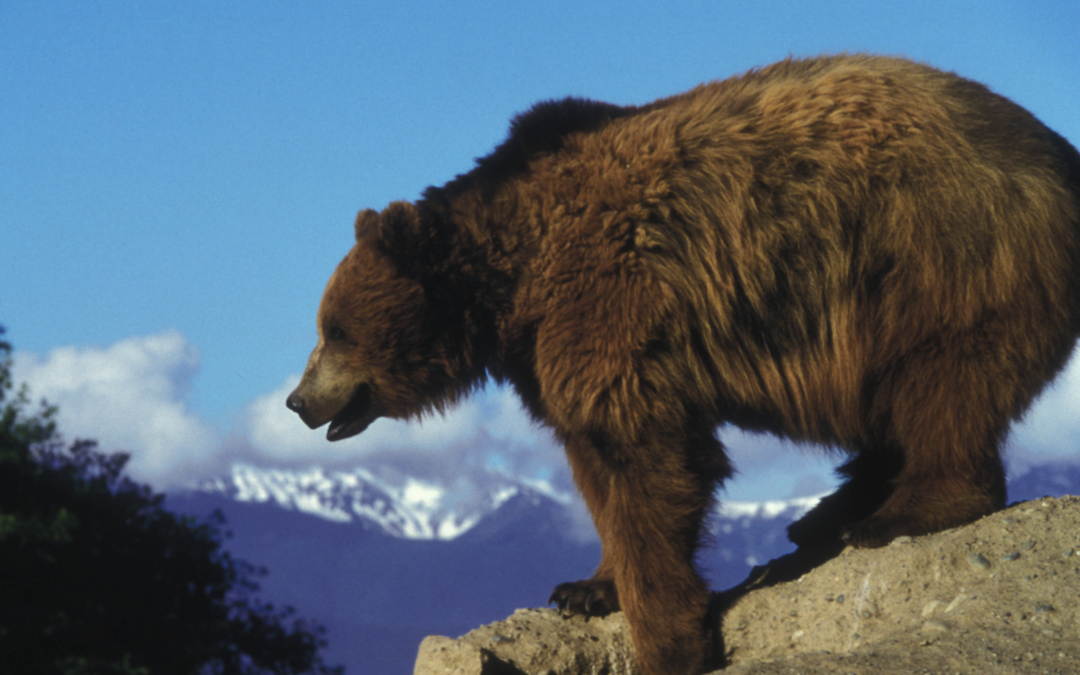In the last few weeks, I have been thinking a lot about coexistence with animals. Actually, I always think about it, but I have been thinking about it in a new way. I read a story yesterday about a case of human-bear conflict and coexistence in Wyoming that inspired me to think about coexistence more carefully.
According to the article, over the summer of 2023, at the Wind River Indian Reservation, a male grizzly bear displayed aggressive behavior and approached camps, raising concerns for camper safety. In response, the U.S. Fish and Wildlife recommended closing the area to human access. The tribal councils of the Shoshone and Arapaho tribes supported this precautionary measure, and on July 24, they announced the closure of the area to protect both people and wildlife.
This large-scale area closure is a rare step to avert potential conflicts with wildlife. There were no further conflicts reported after the closure, indicating that the bear either moved away or altered its behavior, leading to the reopening of the area after about three weeks.
What resonated with me the most about this is how unexpected the story was. I have advocated for policies to mitigate human-wildlife conflict. I am quite familiar with campaigns to reduce conflict between people and wildlife (not letting pets out without leashes at dusk and dawn, not leaving uncovered trash out, etc.). But the idea of closing a vast area off from tourism to give the bear a chance to live his life in his habitat, to reduce the risk of his being interested in people or their food or developing behaviors that put him in conflict with people visiting his habitat was new to me.
I had the good fortune to attend the Animal Grantmakers annual conference as a guest last week. I heard a talk by Shawn Butler, a Fellow at St Edmunds College, Cambridge, and a lecturer at the Faculty of Law at the University of Cambridge. He wrote the book on Animal Rights Law (literally). He spoke about the use of the law to protect and improve the welfare of animals by granting them certain legal rights and protections. While these laws do not put animals on an entirely equal footing with humans, they do help to address the inherent power imbalance between humans and animals.
I have been fascinated by the rights of nature for many years after attending The Rights of Nature Symposium held at the Community Environmental Legal Defense Fund symposium in New Orleans in 2017. Rights of nature, also known as legal rights for the environment or the rights of ecosystems, are a legal and philosophical framework that grants legal personhood and certain rights to natural entities, including animals, ecosystems, and even individual species.
As I understand it, these rights-based approaches don’t place animals on an equal footing with humans. Still, they seek to strike a balance between human interests and the ethical treatment of animals and nature. These laws recognize that animals and nature have intrinsic value and deserve protection from unnecessary suffering and exploitation.
So, back to the Wind River Indian reservation and the bear. Often, an aggressive bear is either removed or killed to avoid further conflicts with people. But an approach that actually removes people from the conflict instead is one that attempts to strike more of a balance between the primacy of people in an ecosystem and the existence of a bear in its own natural habitat. The article does share that similar closures have been seen in national parks like Grand Teton and Yellowstone in specific circumstances, but it is undoubtedly not the rule.
During our recent panel at the Jackson Wild Conservation Summit and Film Festival on coexistence, Rohan Patel spoke about his 2013 film Pride. Rohan explained that the community in the film in Gujarat, India lives near and with the last remaining population of Asiatic Lions in the world. In this community, it isn’t even considered an option to kill the lions when they come into the village. The lives of the lions (and any other animal) are valuable, and it isn’t part of the worldview of the community members to remove animals just because they can cause conflict with people. In fact, in the film, he shows that people and lions can coexist in relative peace.
In my speech at the Animal Grantmakers, I talked about how we were all in this together, mainly focusing on the fact that we, as different human populations, are all in this together to try and find a way to a more peaceful world. But we are all – including all human animals and non-human animals – in this together. It seems like these animal rights and nature rights approaches are a step to address this separation that we have created in our dominant worldview of separation. These approaches are a step towards giving rights to the voiceless to redress the imbalance we have created in our systems. It is a way of at least getting us to think about the current primacy and dominance of people over animals when addressing coexistence.
There is a spiritual belief that we are all different faces of the divine. If we believe that that includes the faces of every other human and every animal, wouldn’t our behavior be more compassionate, kind, and joyful? Maybe coexisting in peace with all beings starts with just that.
Image courtesy of the USFWS.
Join our Newsletter Donate to bring Wild Happiness to communities and wildlife Follow us on socials!
